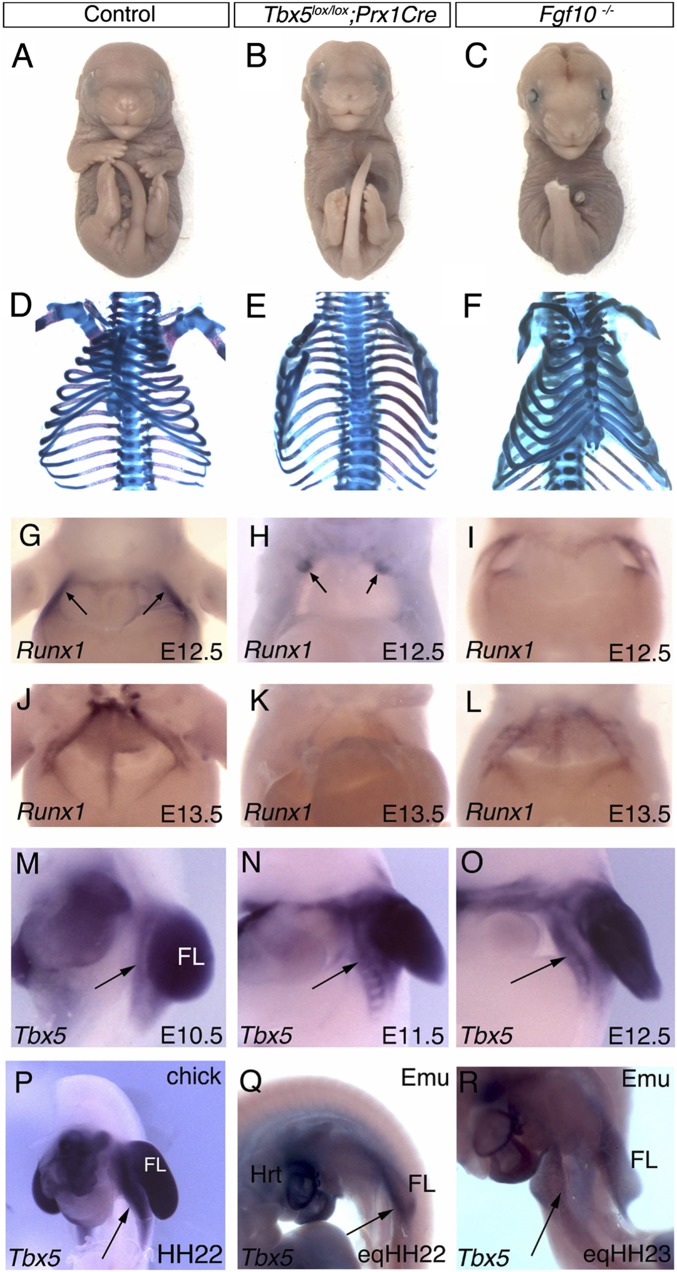Fig. 3.
The sternal bands and forelimbs fail to form in the absence of Tbx5. Ventral views of control (A and D), Tbx5 conditional mutant (Tbx5lox/lox;Prx1Cre) (B and E), and Fgf10 mutant (Fgf10−/−) (C and F) embryos at E17.5. In whole-mount (A–C) and Alcian Blue/Alizarin Red (D–F) skeletal preparations. The most distal forelimb structures have been cropped in the control image. (G–L) Ventral views of Runx1 expression in the sternal precursors (arrows) at E12.5 and E13.5 in control, Tbx5lox/lox;Prx1Cre, and Fgf10−/− mouse embryos. Herniation of the internal organs following the failure of body wall closure present in H and K. (M–O) Ventrolateral view showing Tbx5 expression in the forelimb and ventral body wall detected by in situ hybridization in E10.5, 11.5, and 12.5 mouse embryos..(P) Ventrolateral view of HH22 chick showing Tbx5 expression in the forelimb bud (FL) and LPM ventral to the limb bud (black arrow). (Q and R) Ventrolateral views of Emu embryos at eqHH22 and eqHH23, respectively, showing expression of Tbx5 in the small forelimb bud (FL) and LPM ventral to the limb bud (black arrows).

